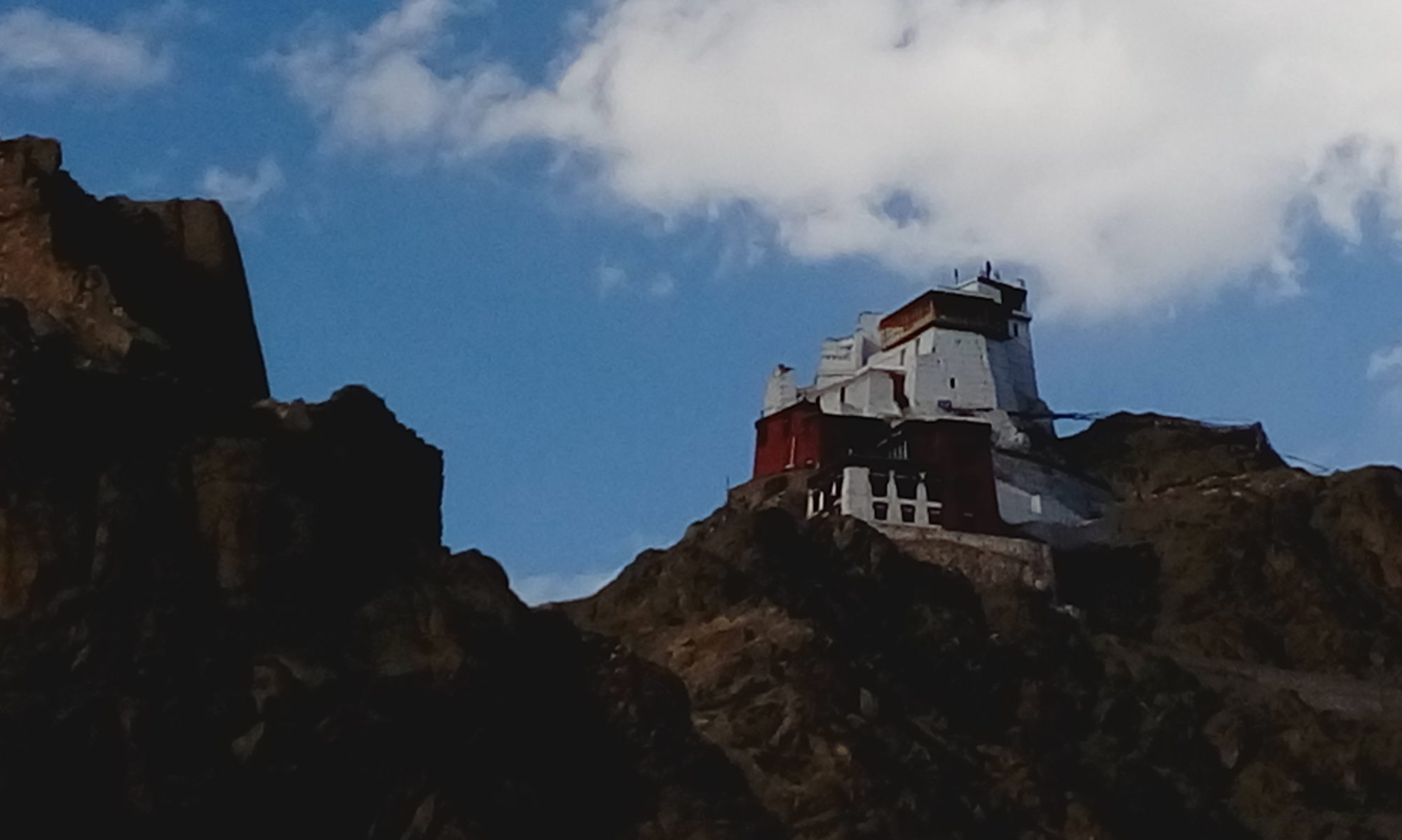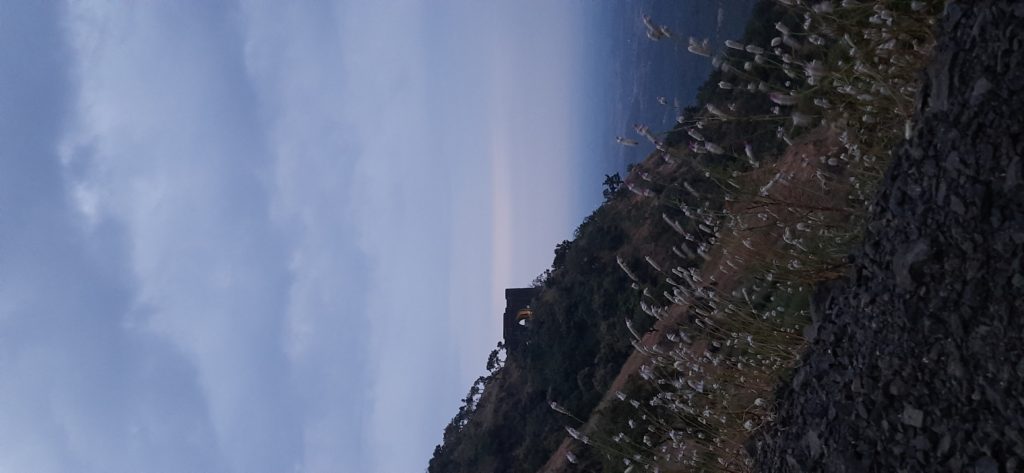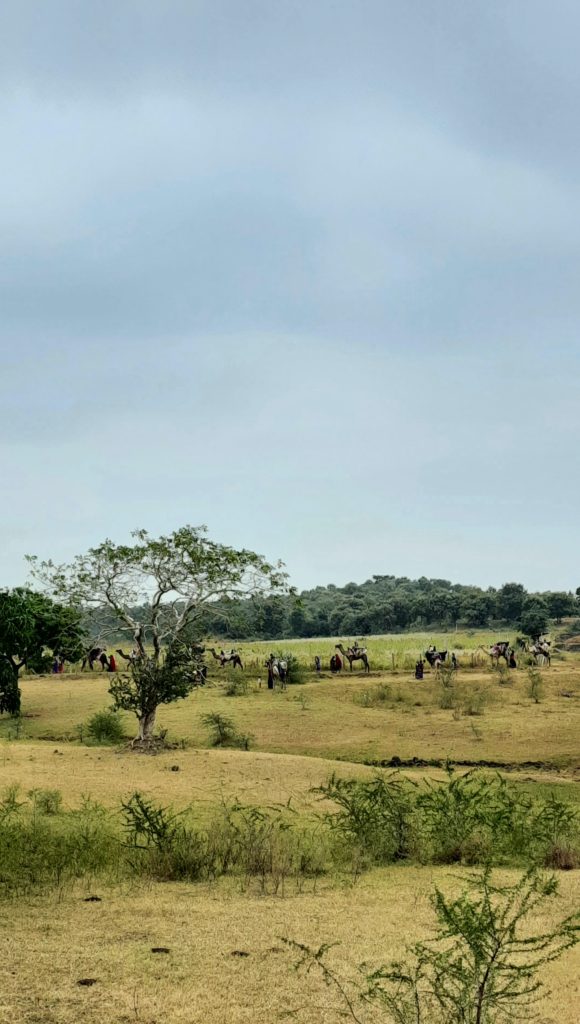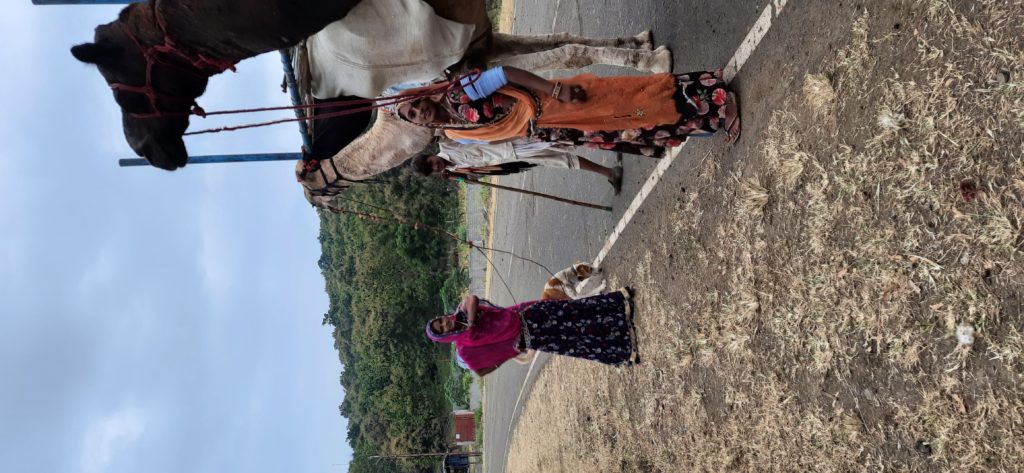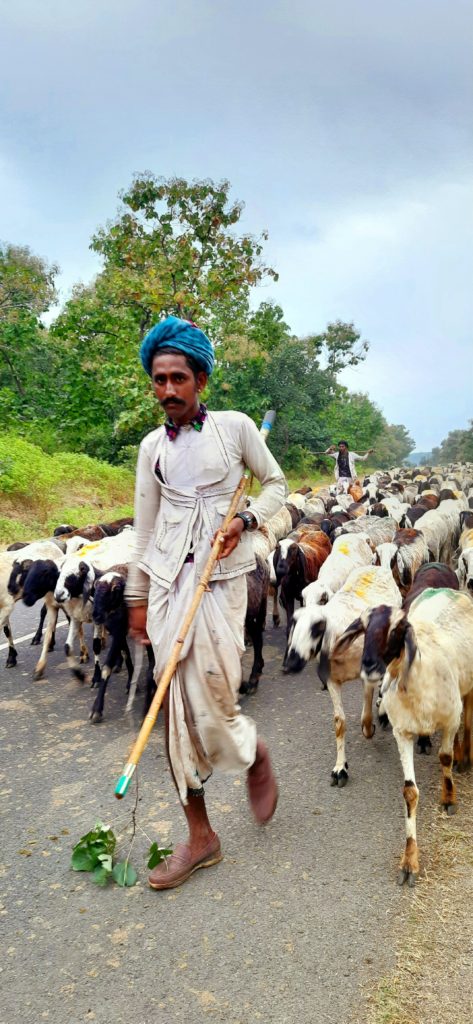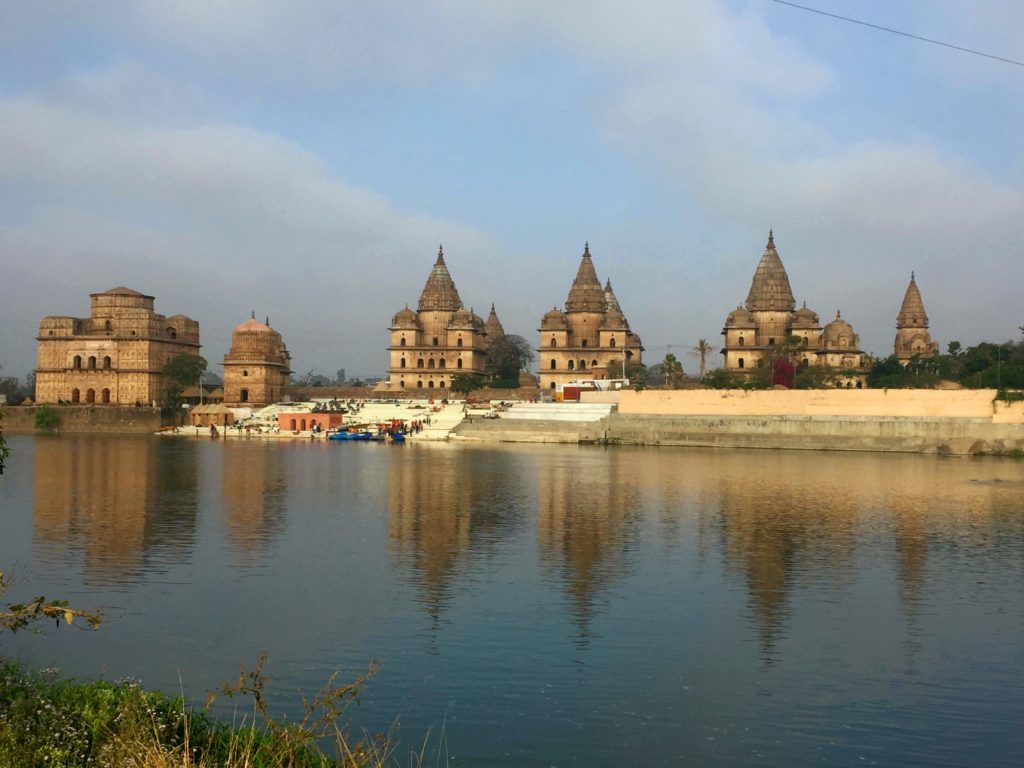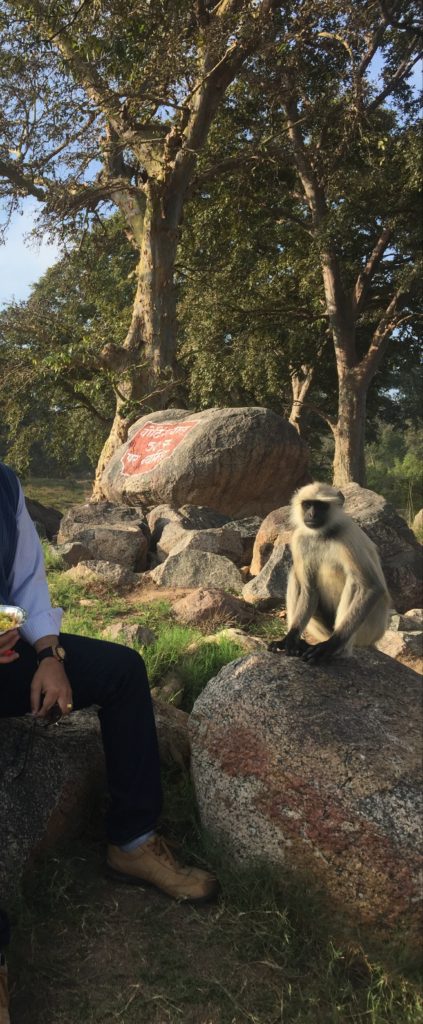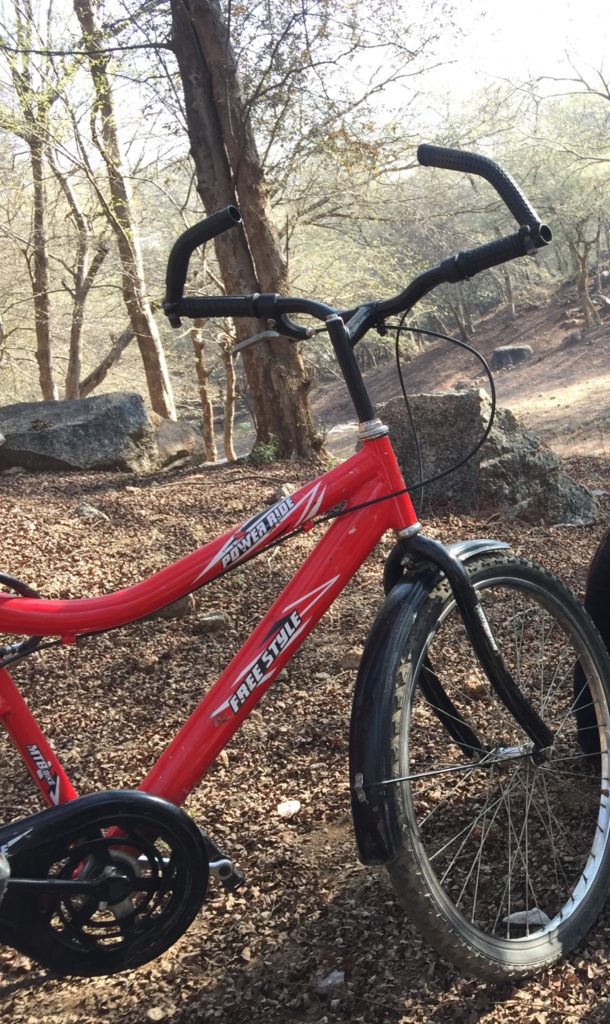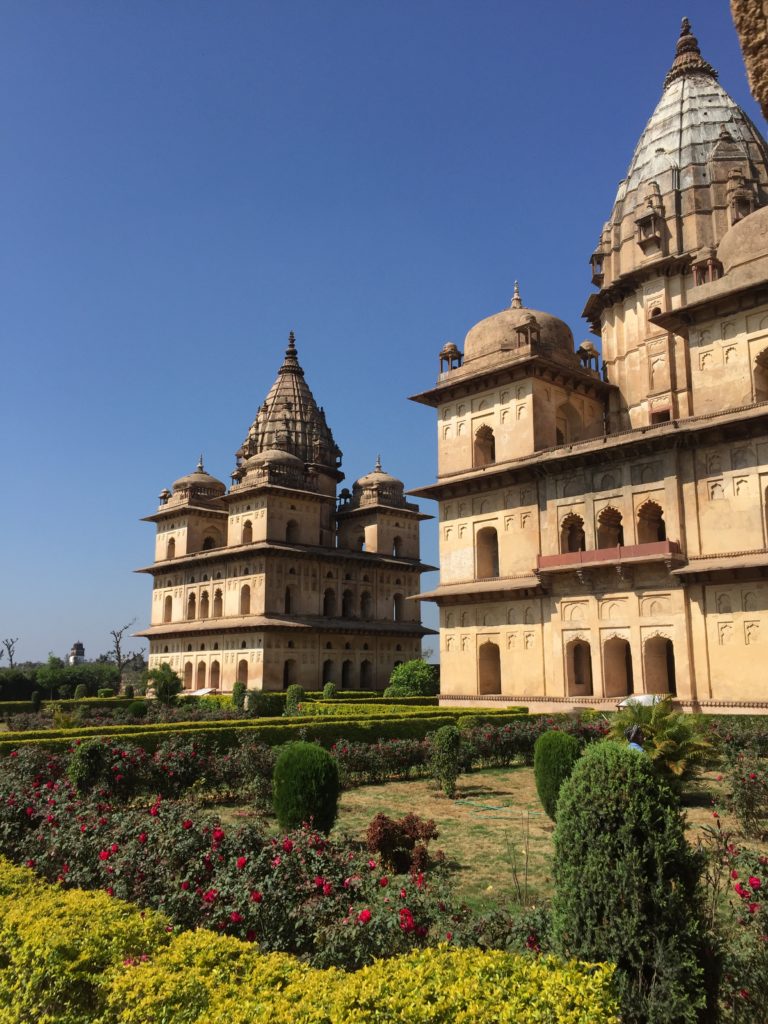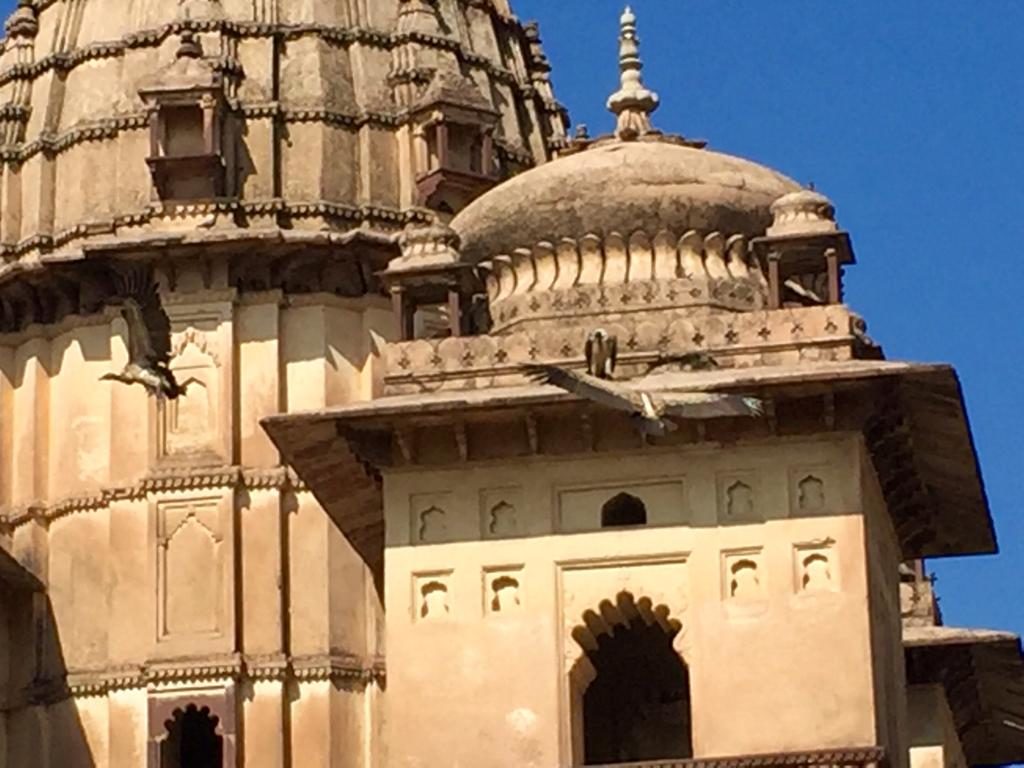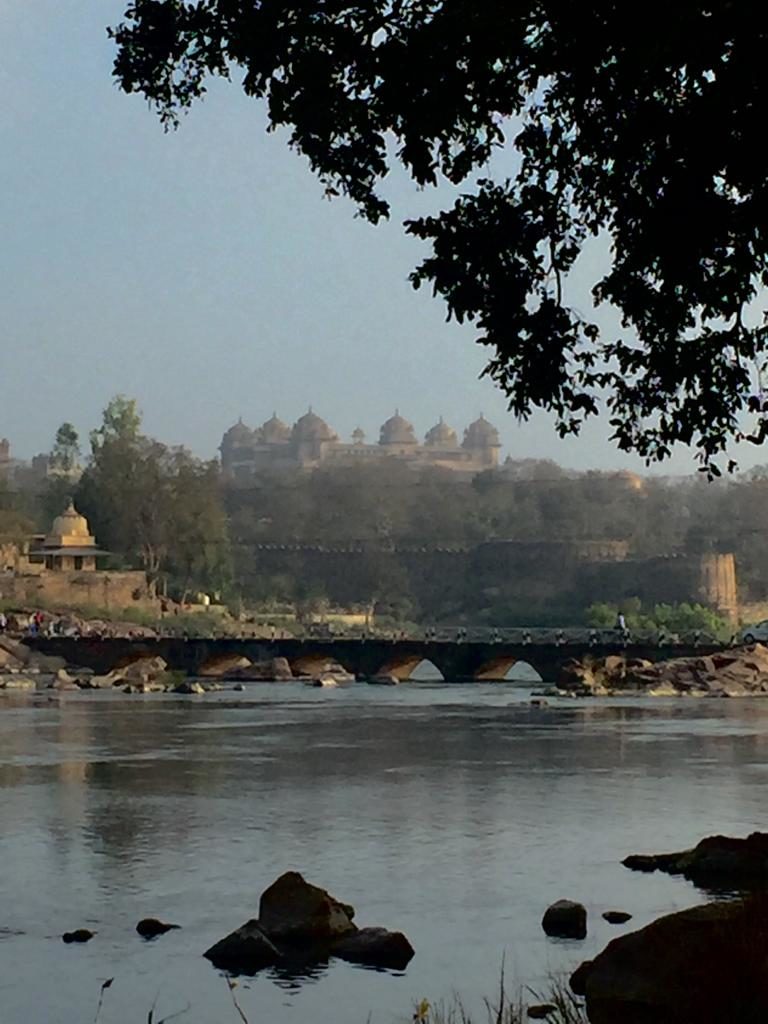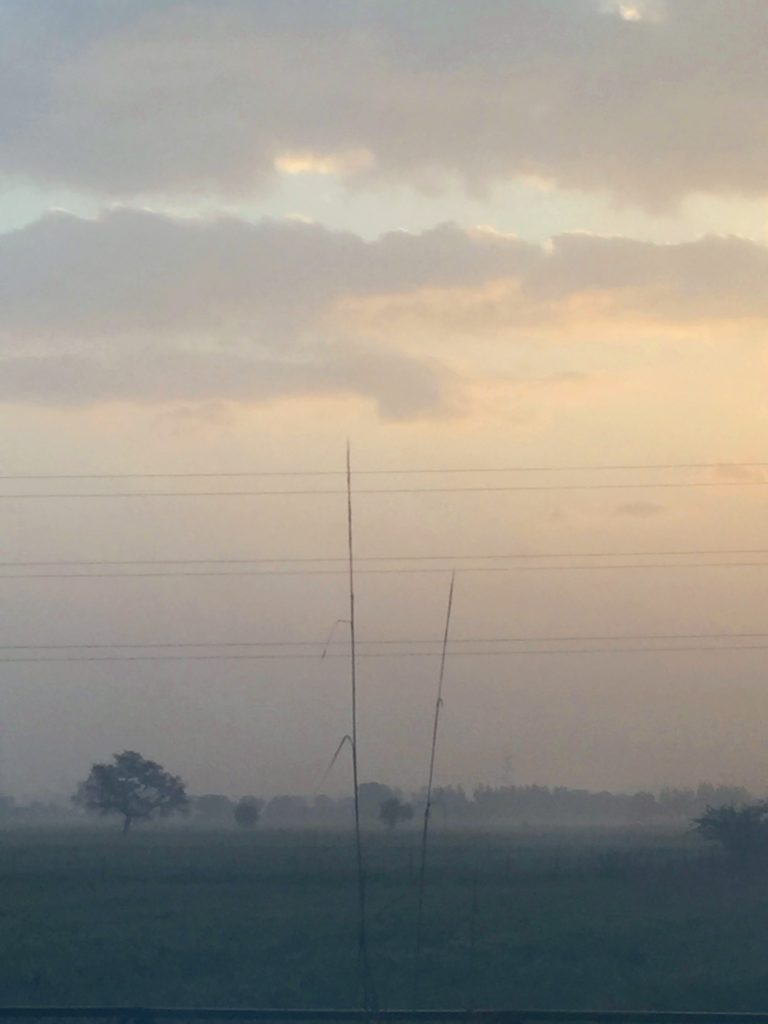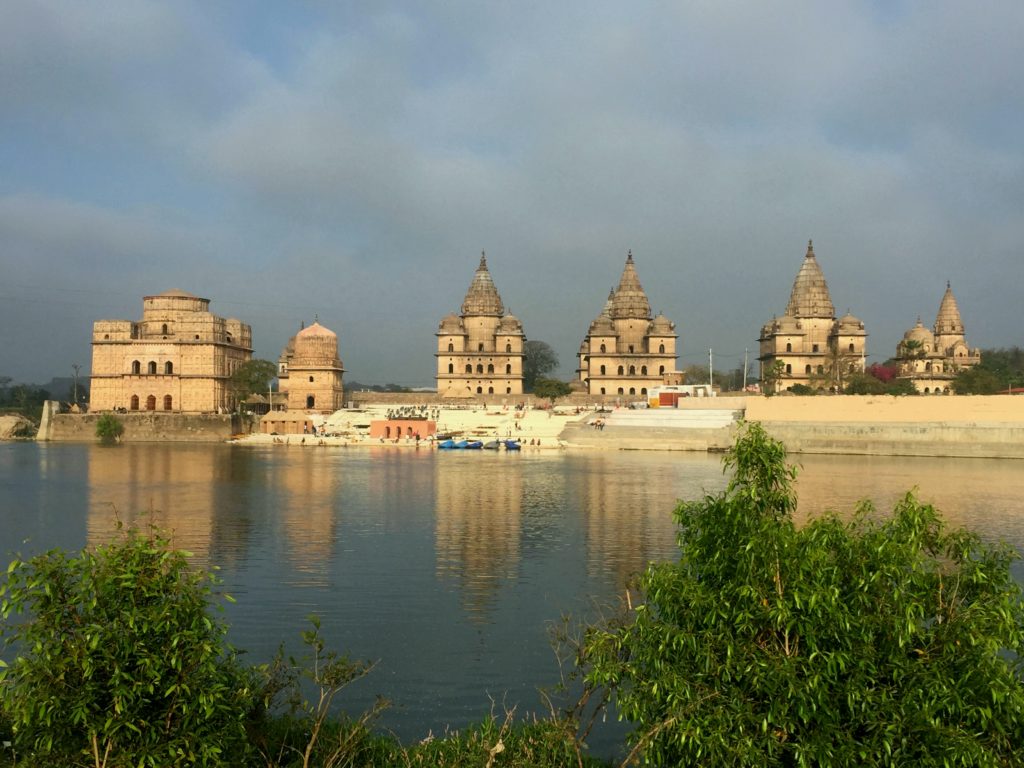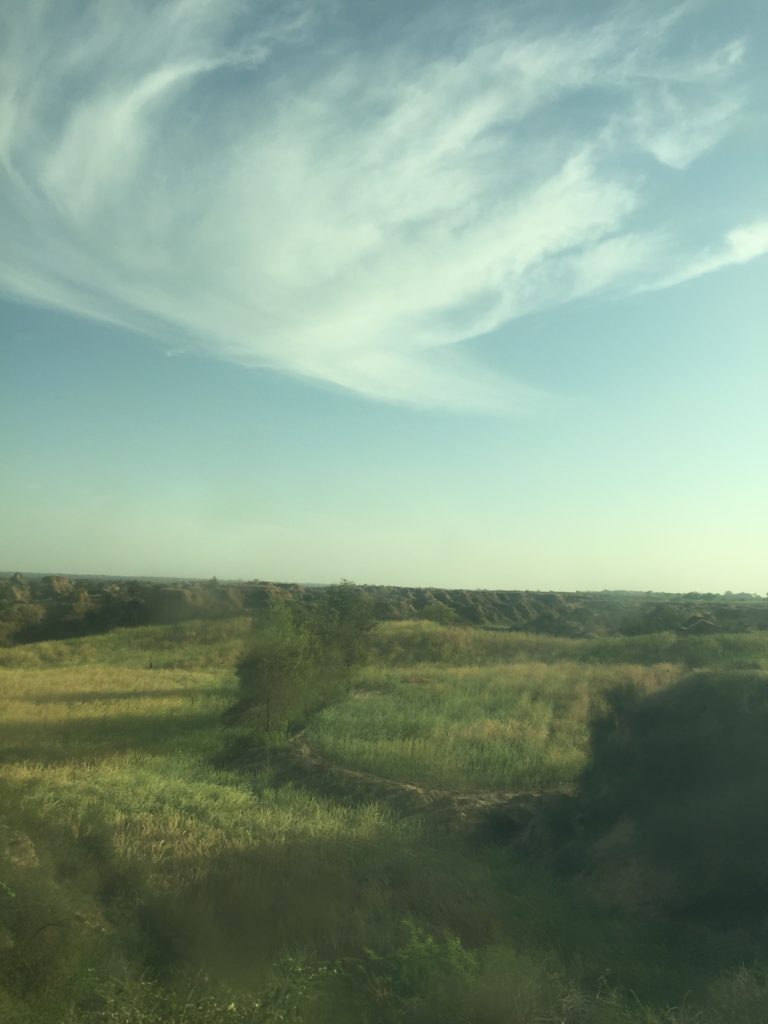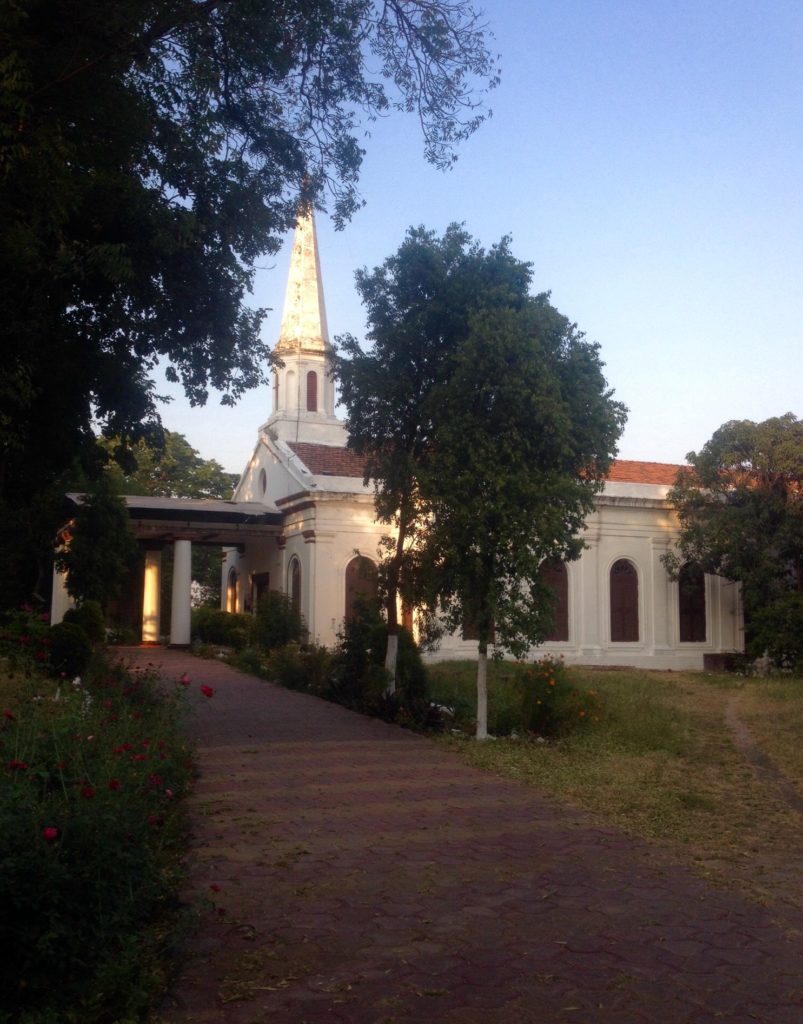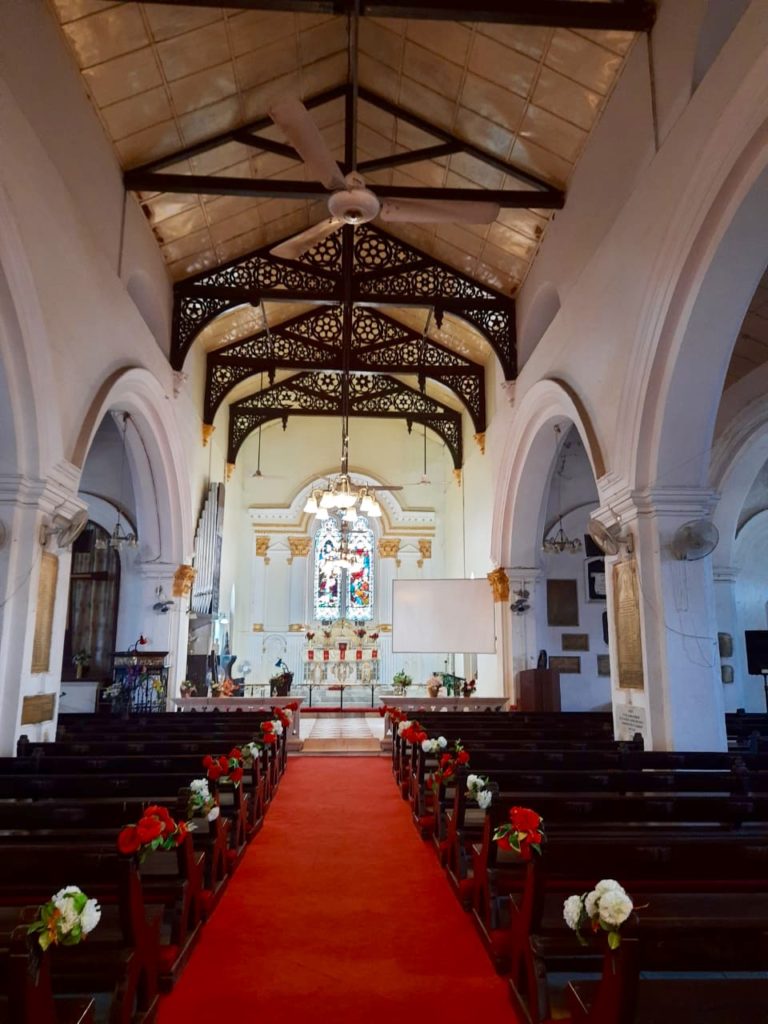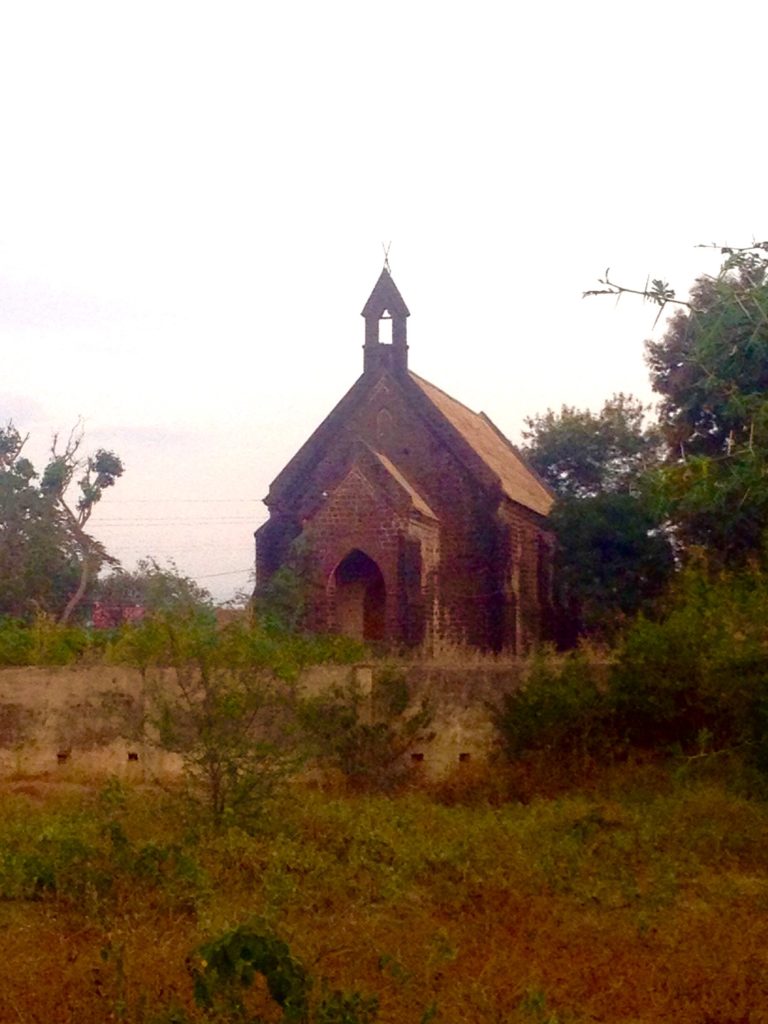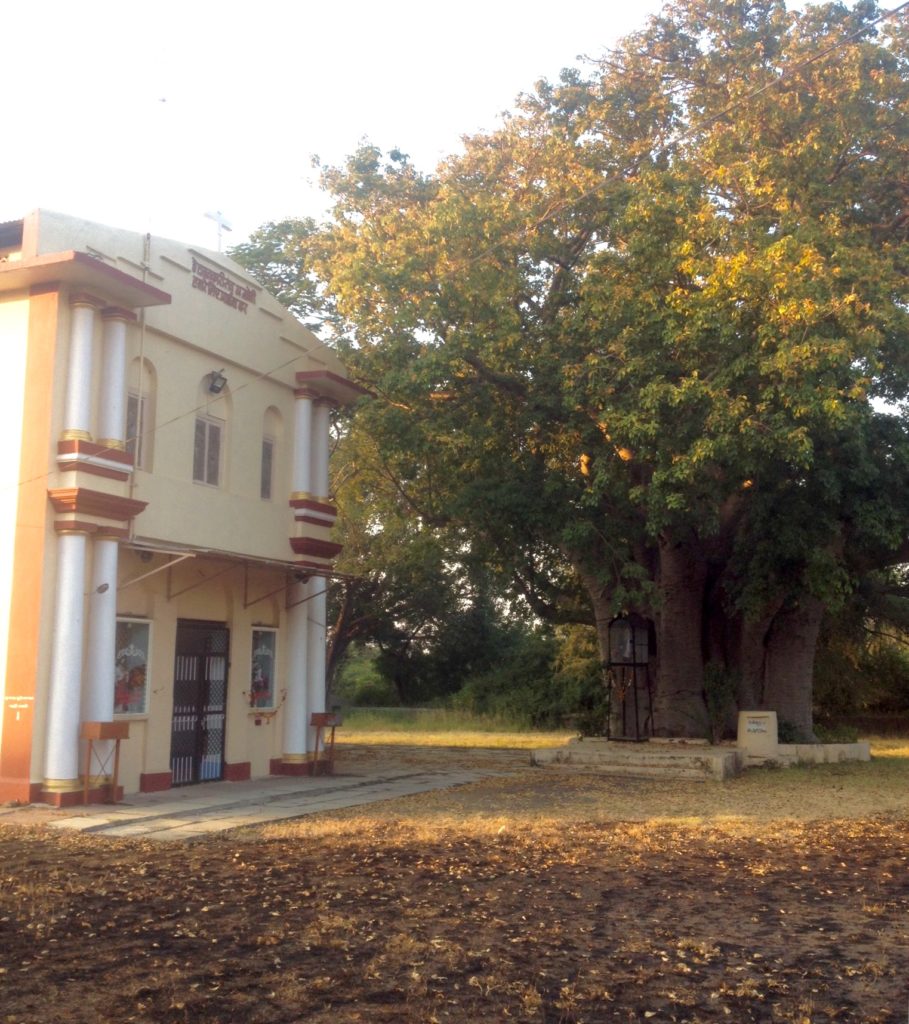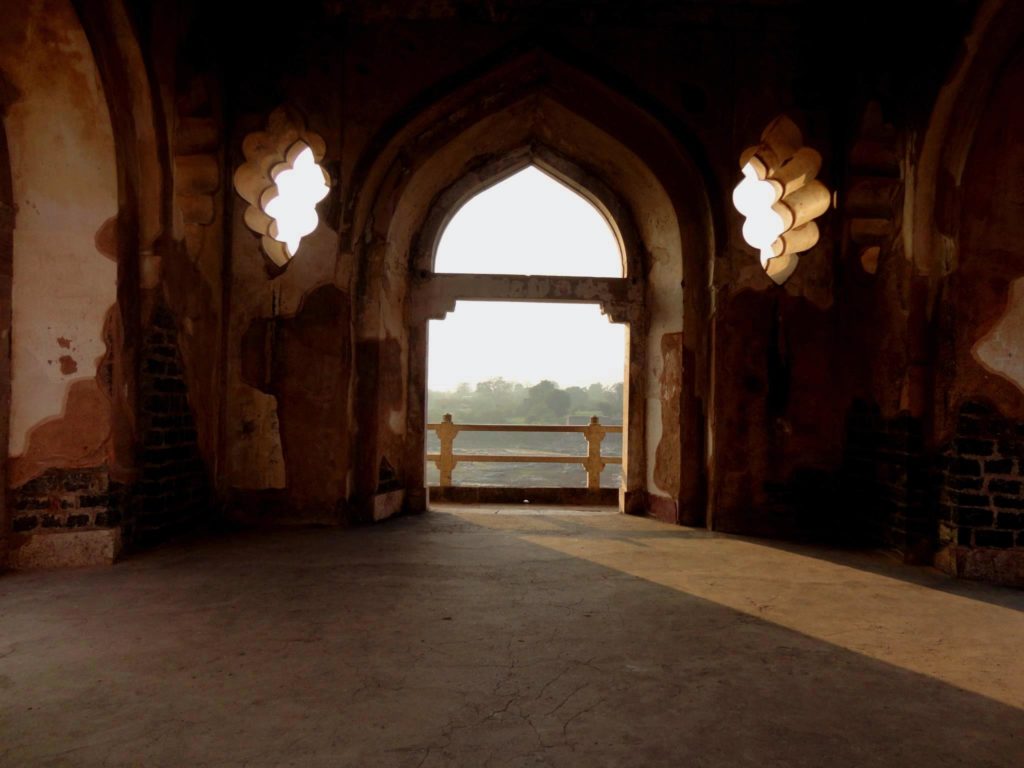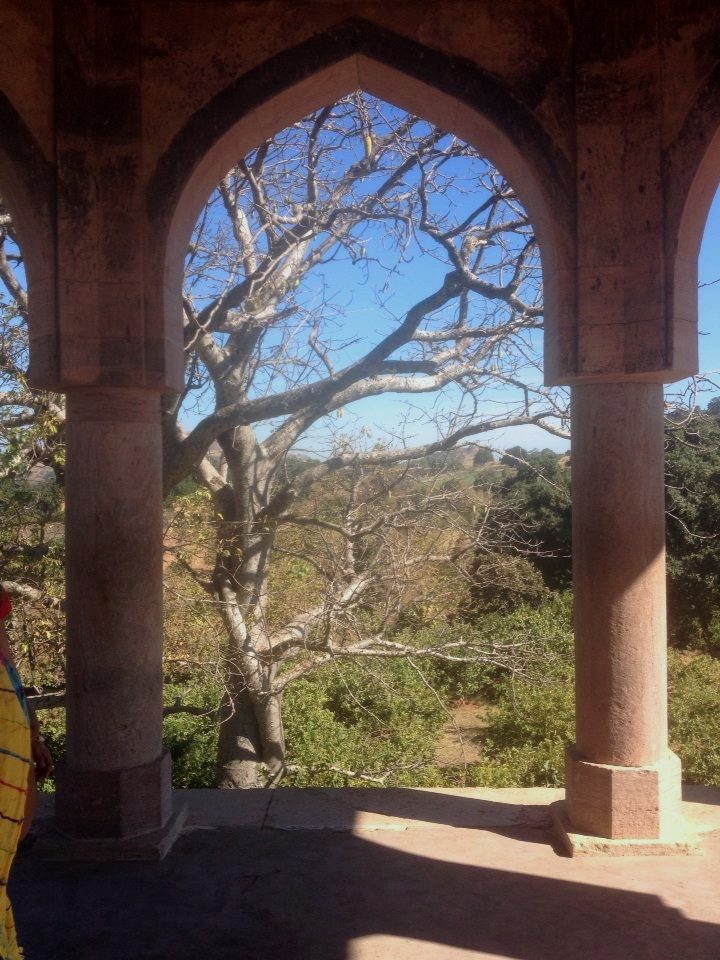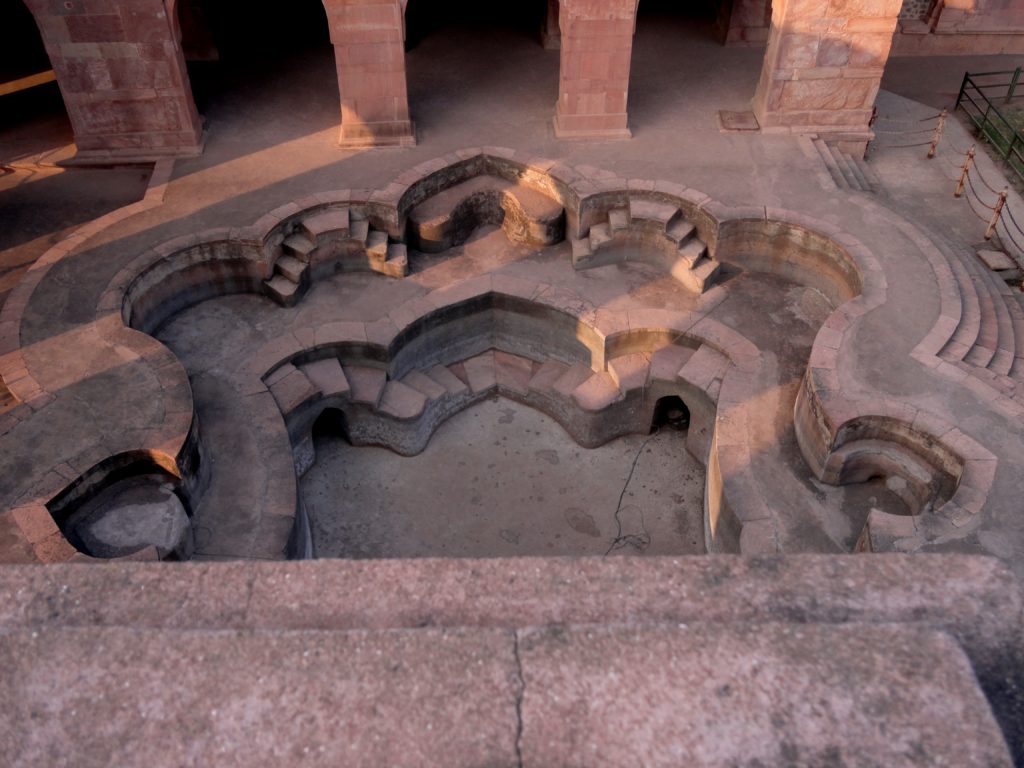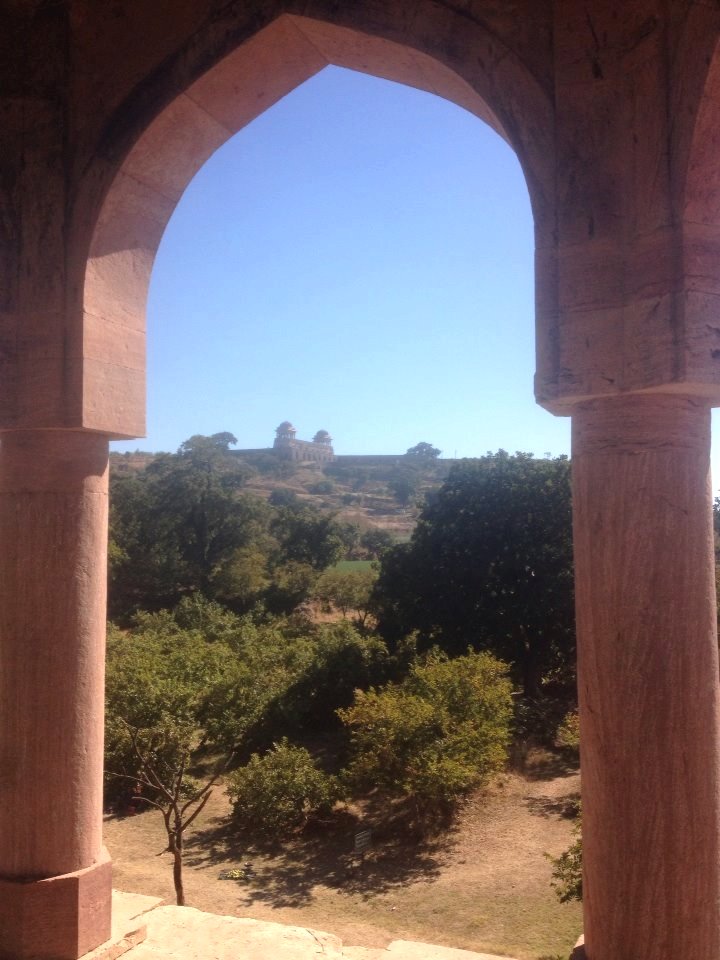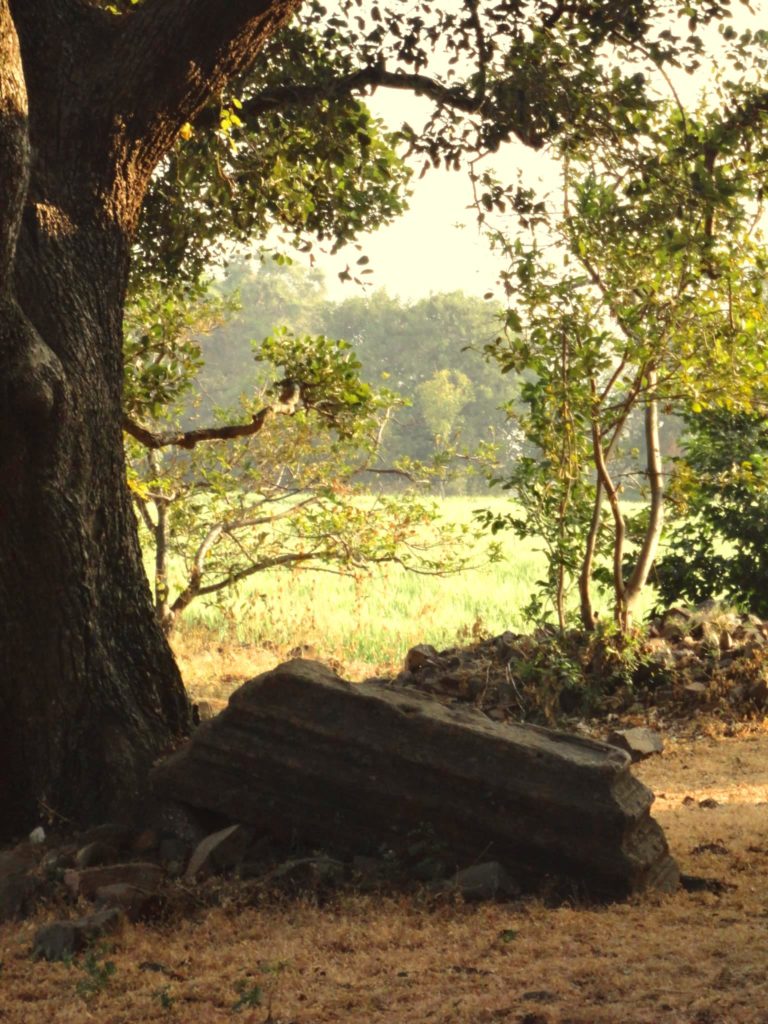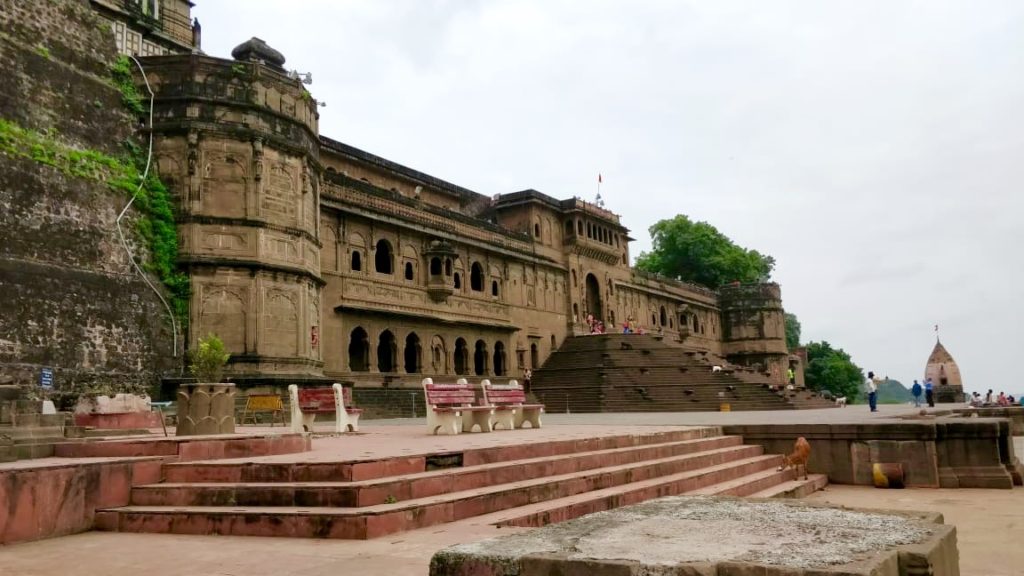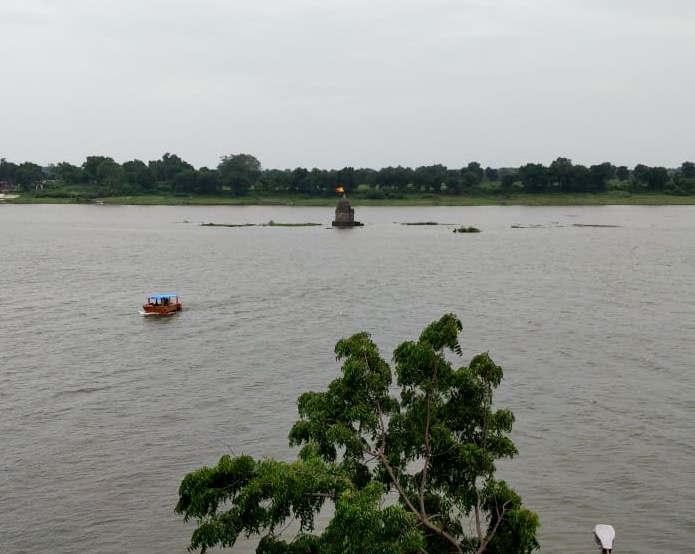The stage was set. The accompanying cast played their part, only the main lead did not get the brief to, well, just show up! Pench is the land of Mowgli and his tribe of wolves, with Bagheera the black panther, Baloo the bear, Kaa the python and ofcourse, Shere Khan the tiger, all to be found in the jungles around Seoni, a place close to Pench. From here the tale with kernels rooted in reality originated. It inspired Rudyard Kipling to write a collection of stories succinctly named the Jungle Book.
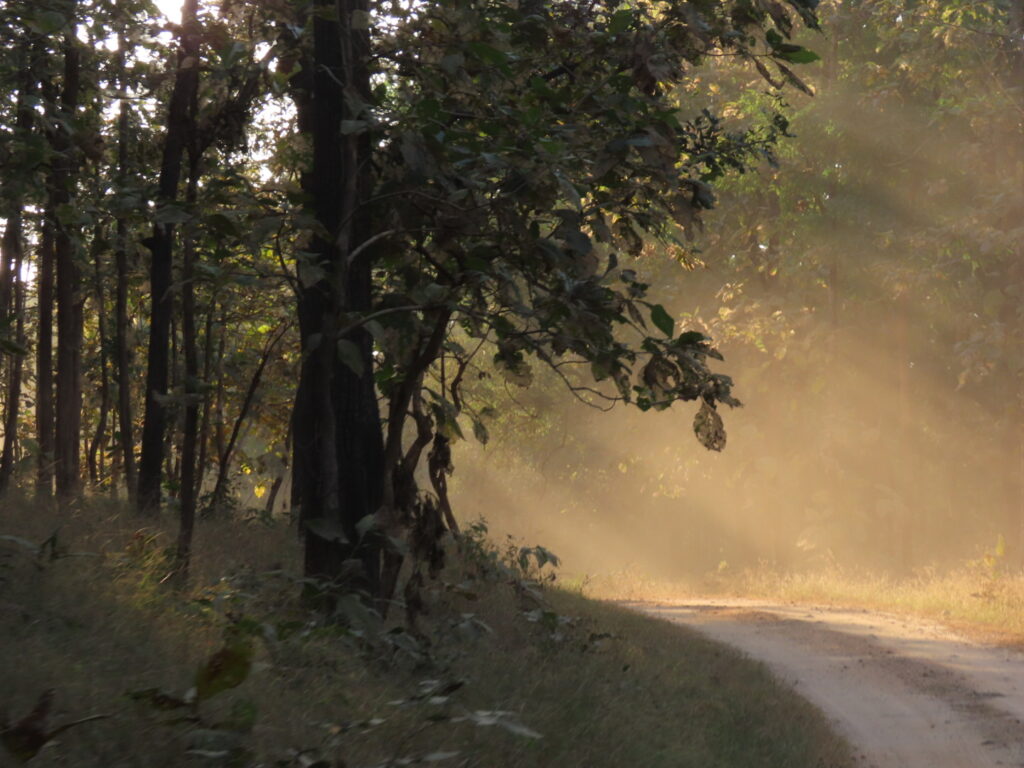
Uncaged Jungles
The drive to Pench is beautiful through Madhya Pradesh. We get down from the Malwa plateau on a highway being remade. Ironically all the work through the teak forest to make the new alignment and the tunnelling has made the wildlife move to the neighbouring urban areas it seems. We cross the Narmada where a smattering of Brahminy ducks with their bright orange backs and black beaks bob around like beacons in the water.

The road winds through fertile valleys with hamlets surrounded by hills covered with thick teak forests. It feels like a tiger could saunter across the road at any time. Dried rivulets run helter-skelter promising to be full in season. In winter, only fractured pools hold wishy washy memories of monsoon. A massive reservoir is the perfect place for a break to have the coffee we are carrying. A man tilling his fields by the shore and a flock of white herons give us company.
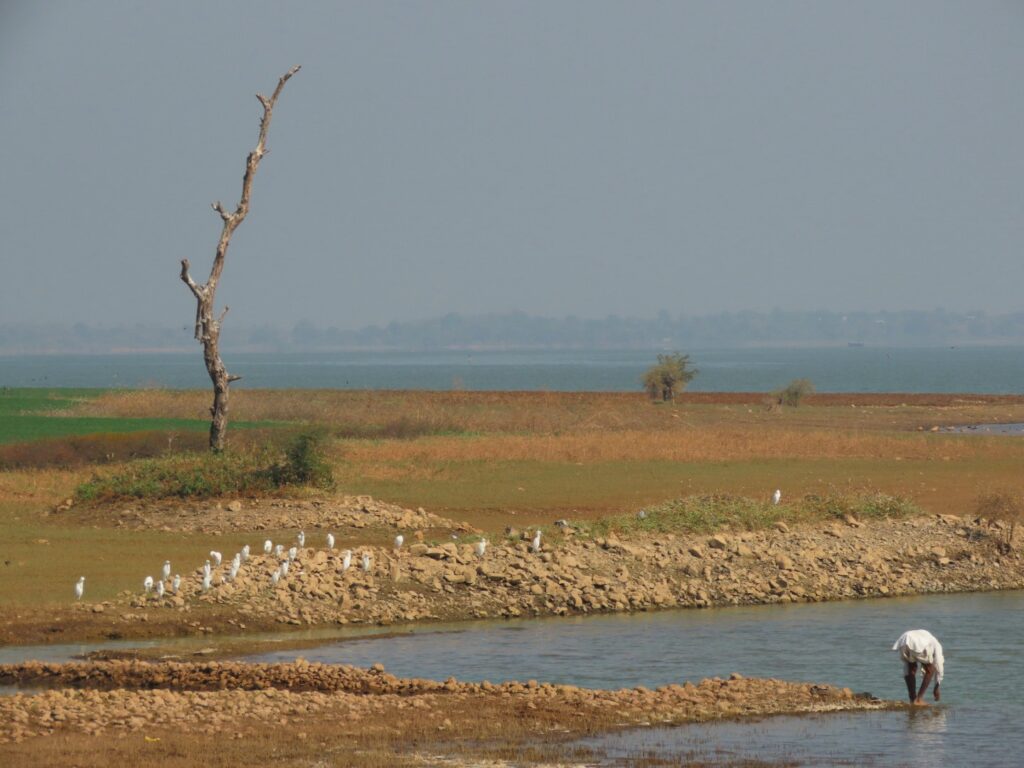
A high-volume highway connecting Jabalpur to Nagpur passes through the buffer zone as we approach Pench with flyovers at animal crossing. I wonder about the traffic sense of the animals. Must be better than ours. In India we all are jay walkers. Then often bruised and blue jay walkers.
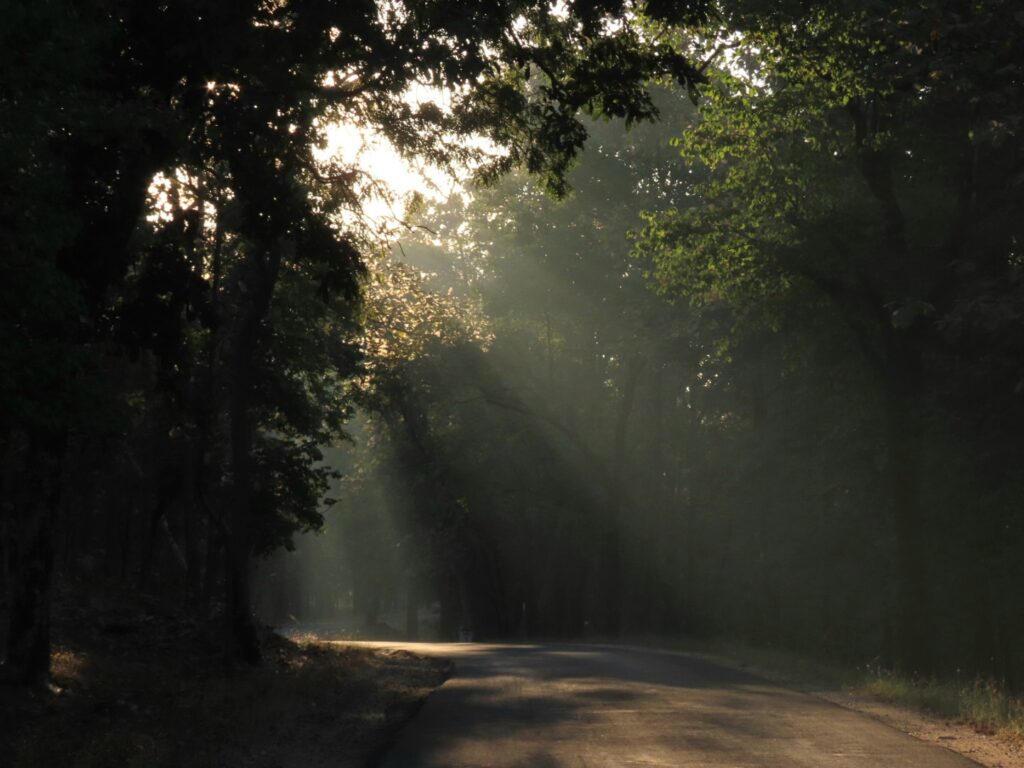
We turn off the highway and cross the Khawasa buffer zone on a narrow road lined with forest which makes way for resorts, fields and hamlets with bright blue and green walled houses. A deflated hot air balloon is an incongruous sight in a field. We reach our hotel near Turia gate and call it an early night.
Also read- Ranthambore Alert -Ticketing Trials and Tiger Trails
White Trees, Amber Grass and a Golden Coat
The next morning, we rise before the sun to get into a high Canter with our breakfast basket. The gypsies have already lined up at Turia gate. Inside there are no zones but designated routes and all routes eventually circle to the breakfast point near the Totladoh reservoir. Our guide is an enthusiastic fellow for whom, thankfully, it not all about the tiger. We stop to admire herds of curious spotted deer. The males have velveteen antlers.
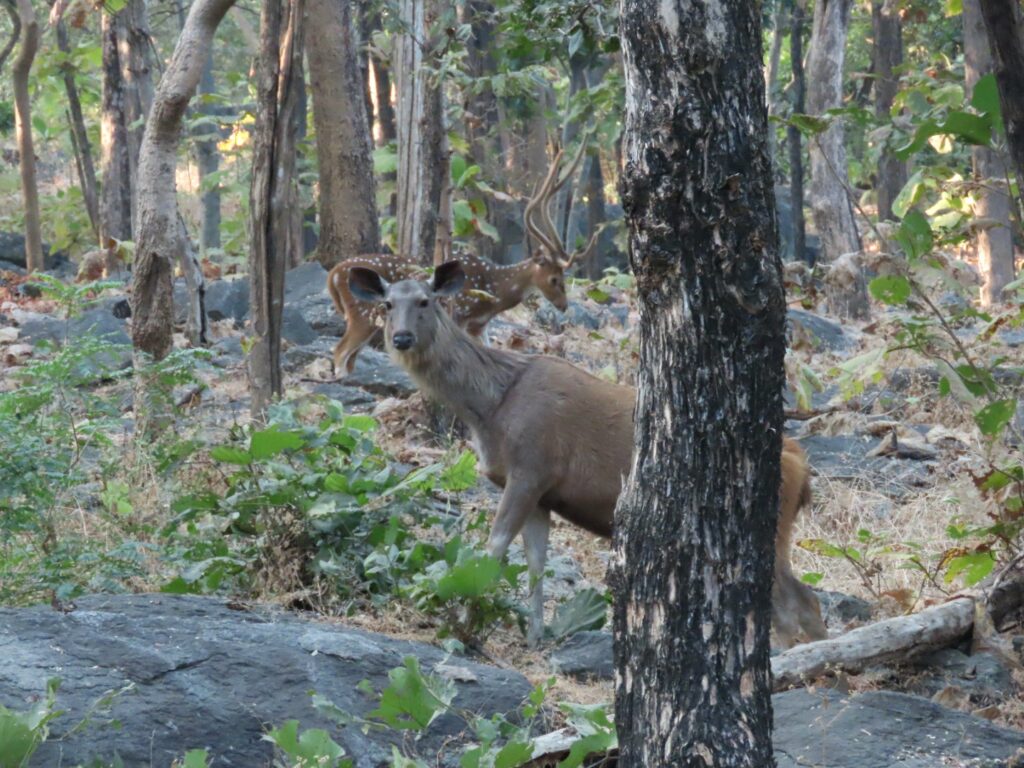
A noisy group of massive wild boars cross our path. The full grown, assured ones don’t scamper into the undergrowth. We are near a dry gulley when we hear the call! We go back and forth a little bit but the tiger seems to settle down somewhere and the call dies out. This part of the forest is more undulating and rockier. Perfect leopard country we are told. But Bagheera, and there is a solitary black panther in Pench, remains elusive.
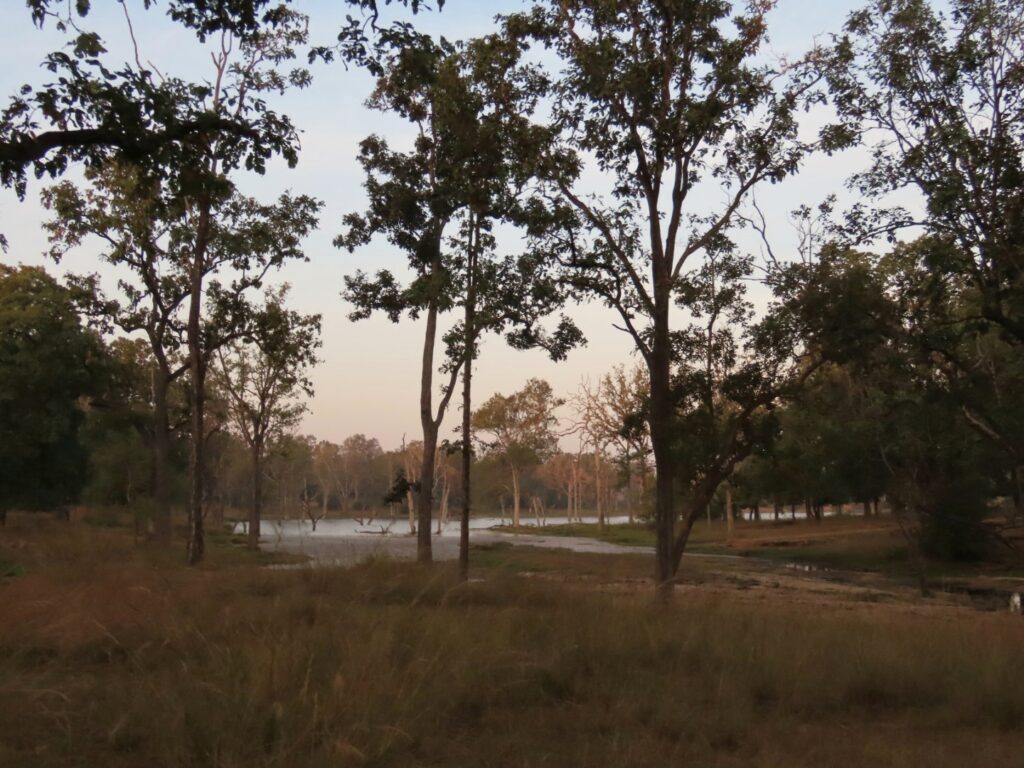
The grass catches the light filtering through the treed canopy and burns a honey amber as it grows between the massive black rocks. We stop near a dried pool and an Arjun tree is pointed out to us. Then a moulting Ghost tree on a mound of boulders. The massive skeletal white tree so aptly named is peeling an onion pink. Apparently, the peel changes colour depending on the season.
Read- Part One- On the Wild Side of Outstanding Orchha
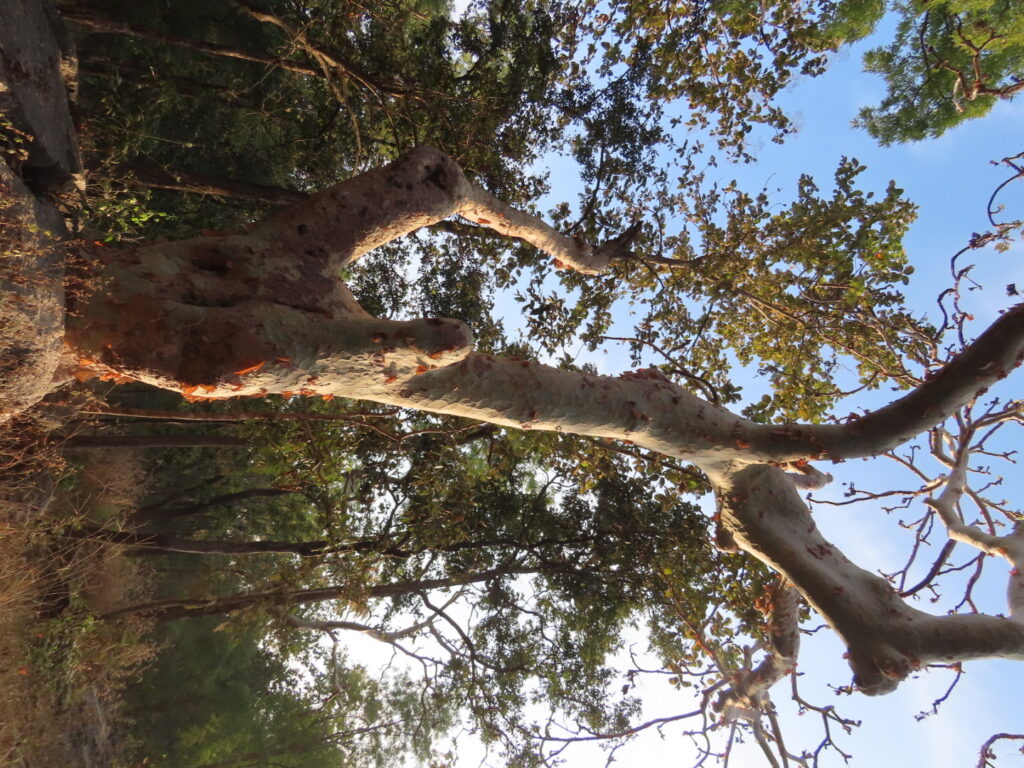
Though the Arjun and the ghost tree look similar at a glance, the former needs moisture rich ground and the latter prefers dry rocky land. We cross a forest guard camp and an elephant is tethered to a tree. He seems to do a jig when someone with perhaps his breakfast approaches him. This is not elephant country since the deciduous forest cannot feed herds through the year.
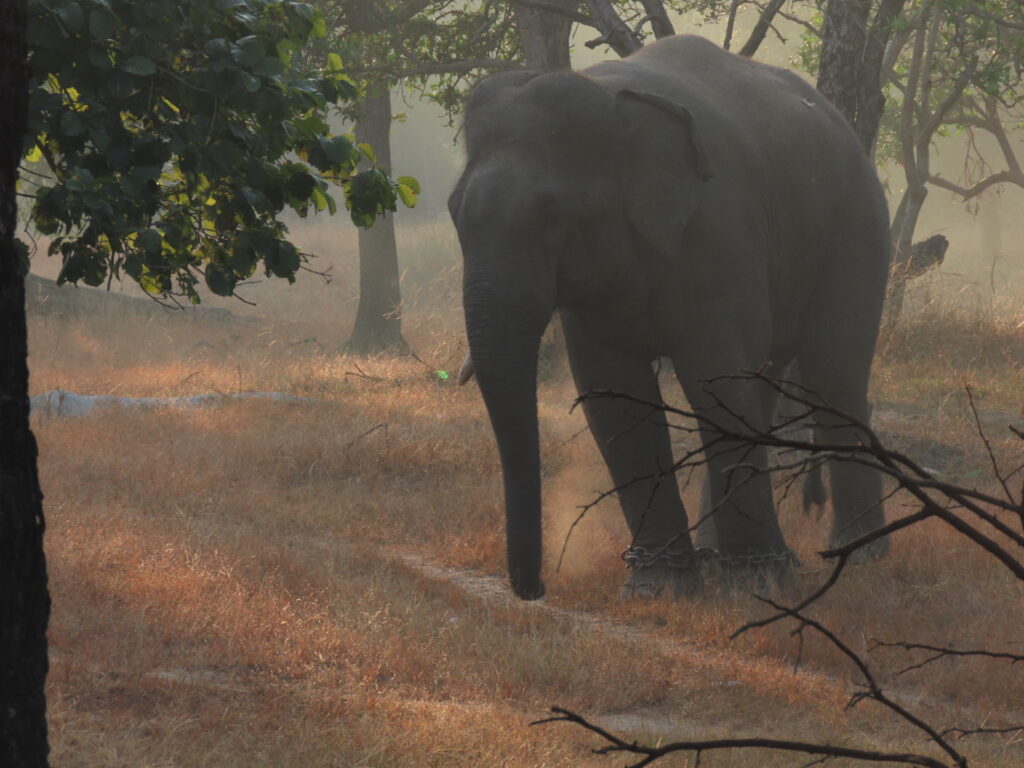
Massive gaurs ruminate and snooze in the cool morning as we approach the breakfast place. All the vehicles congregate at this mound. There is excited chatter on who caught a glimpse of the elusive cat. Someone says they saw a tigress with cubs and a tiger! In the jungles the ‘have seen’ have a certain mein.
Discover- Barot And the Serendipitous Catch in the Uhl River
We are heading back when we are told of a leopard sighting ahead. Only a trained eye would have spotted the sleeping beauty away off the road. He does not even twitch an ear, oblivious to the commotion he has caused, in a shaded grove on a black boulder. His rich spotted coat spread on the rock does not need the sun to glow golden!
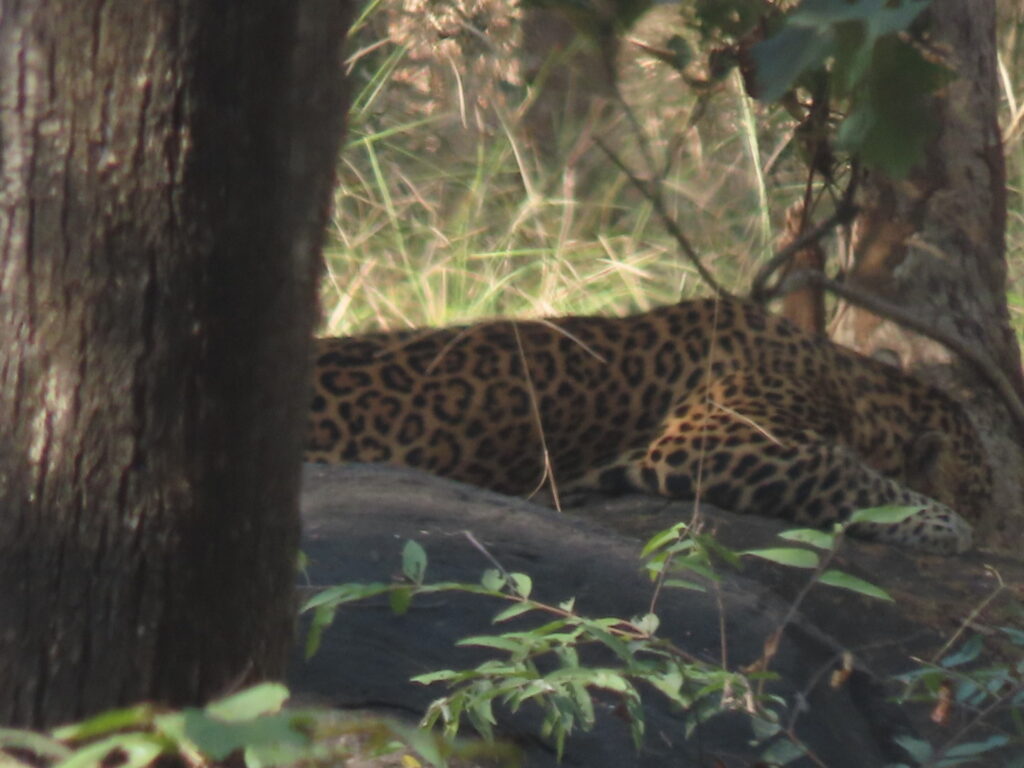
Met by Moonlight
I know of no other place that offers the night safari, supposedly a good chance to see the Indian wolf. But surprisingly the wolf is the rarest animal to be spotted here. Mowgli’s tribes’ numbers have dwindled drastically. The night safari is in the Khawasa buffer zone. We enter as the sun sets and the trees close in and soon there is nothing to be seen beyond the headlights. Even though the sound of traffic from the highway never completes abates, it is a little unsettling. The moon throws shadows and when we stop near a towering mound of rocks made pitch black by the canopy of trees, I feel unseen eyes on me though I would not be able to spot a thing until it was at touching distance. We see fresh tiger pugmarks along the track and there is anticipation in the air suddenly, but all we chance upon are placid bluebulls and deer.
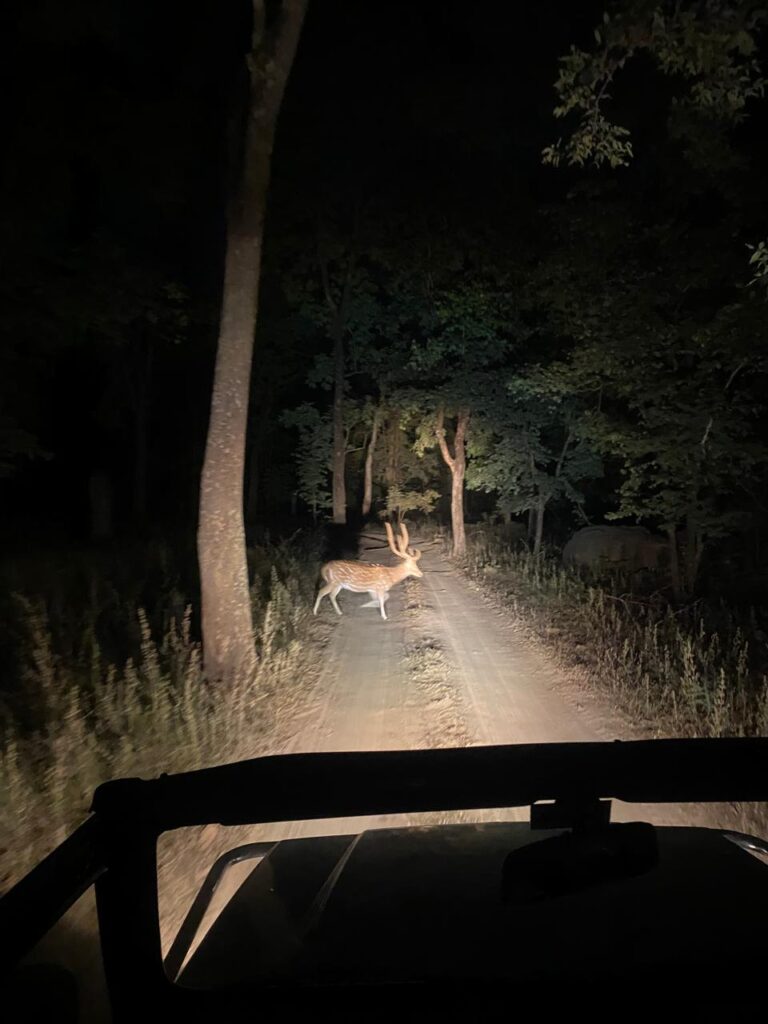
The forest is peacefully asleep. A tigress had been seen near a village adjoining the zone but it has clearly called it a night and so should we.
Dancing Drongos and Dhols
We are in a gypsy for the morning safari next day. I miss the height of the Canter. I spy racket-tailed drongo do a quick dance and disappearing before I can focus my camera. The massive ghost tree of yesterday looks like a familiar friend. A tendu tree’s bark is cinder black in contrast. I love this zone with its rocky countryside! We see a sleeping mottled wood owl. Perched on his tree house is by the road, he resolutely ignores all the oohing and aahing. We are not even worth a death stare!
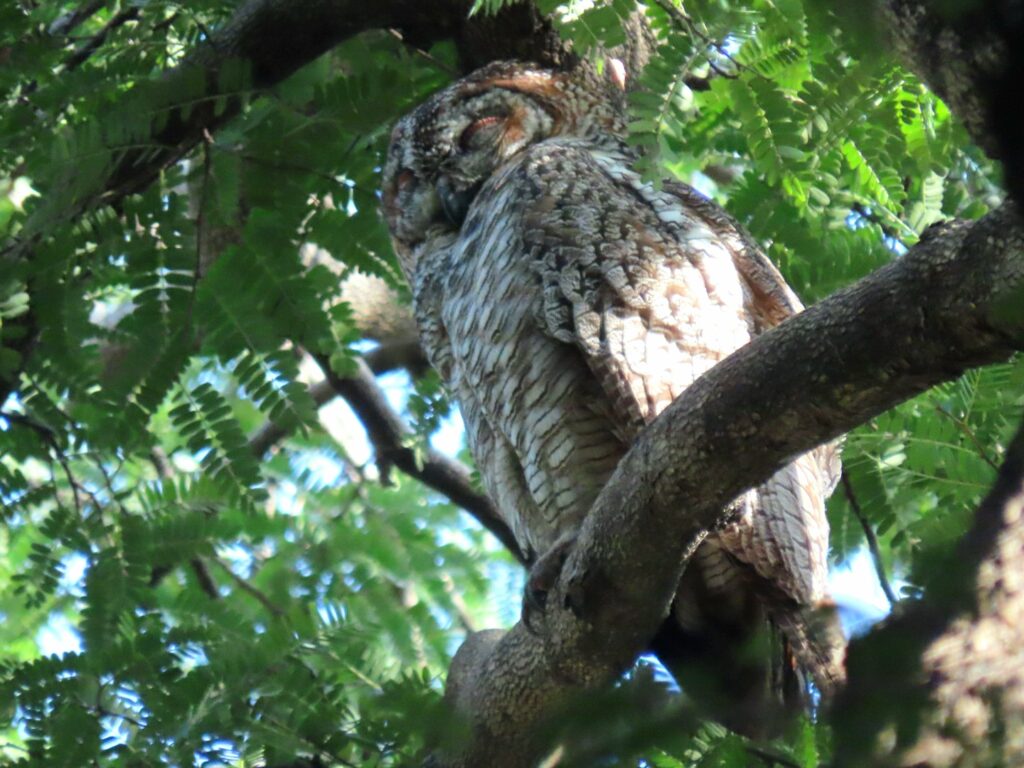
Near the breakfast zone there is absolute excitement and the vehicles go back and forth. A tiger has been seen! But not by us… There is such a smug look, like a cat who has got the cream, on the faces of people who have seen it. We spot a fish eagle and gaurs near the lake. A jackal runs along our vehicle without a care in the world. As we head out in the end we see the one who has got away.. a massive sambar sitting with his head crowned by impressive antlers.
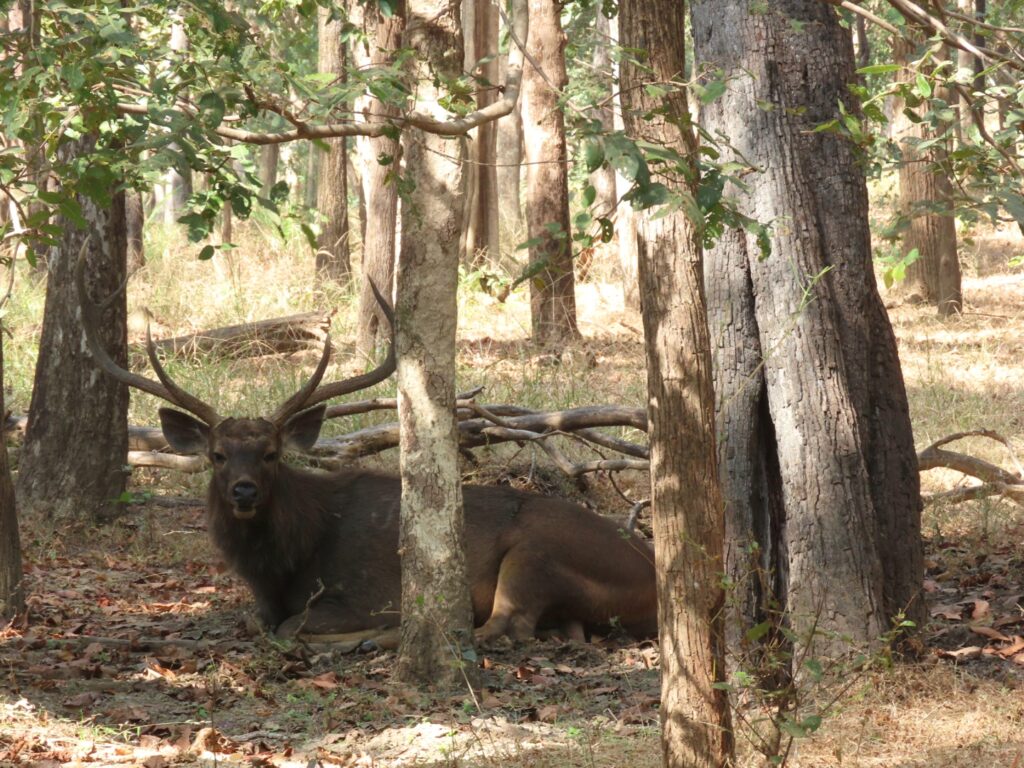
Our last safari in the evening our guide tries his best to ensure we see something striped. But neither stripes nor spots are sighted. What we are treated to is a dhol along the road in a merry mood. At first wary of the attention, he then warms to the gallery, trots along the road, rubs his bums on the grass, prances around and puts up an enthralling show. Has us totally spellbound!
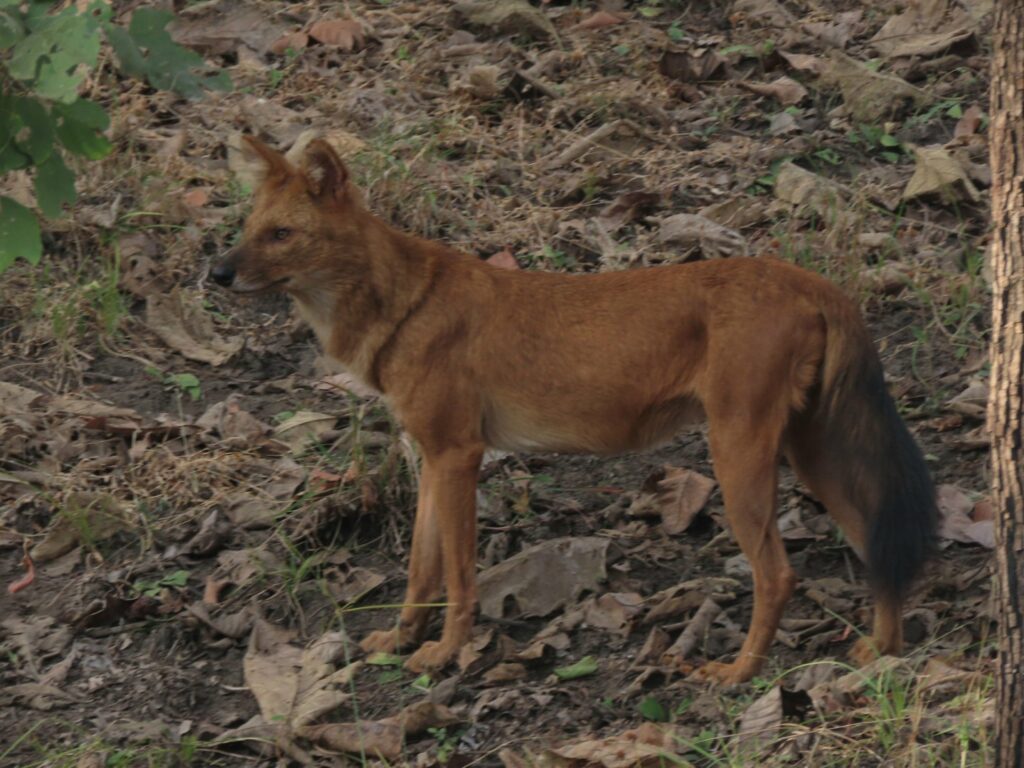
A little later a jackal indulges us with perfect profile shots. We are again treated to the owl. Still sleeping! All is peaceful in the jungle in Pench. The ensemble cast’s performance has been par excellence, as if to make up for the main leads no-show. But perhaps Shere Khan only shows up for Mowgli.
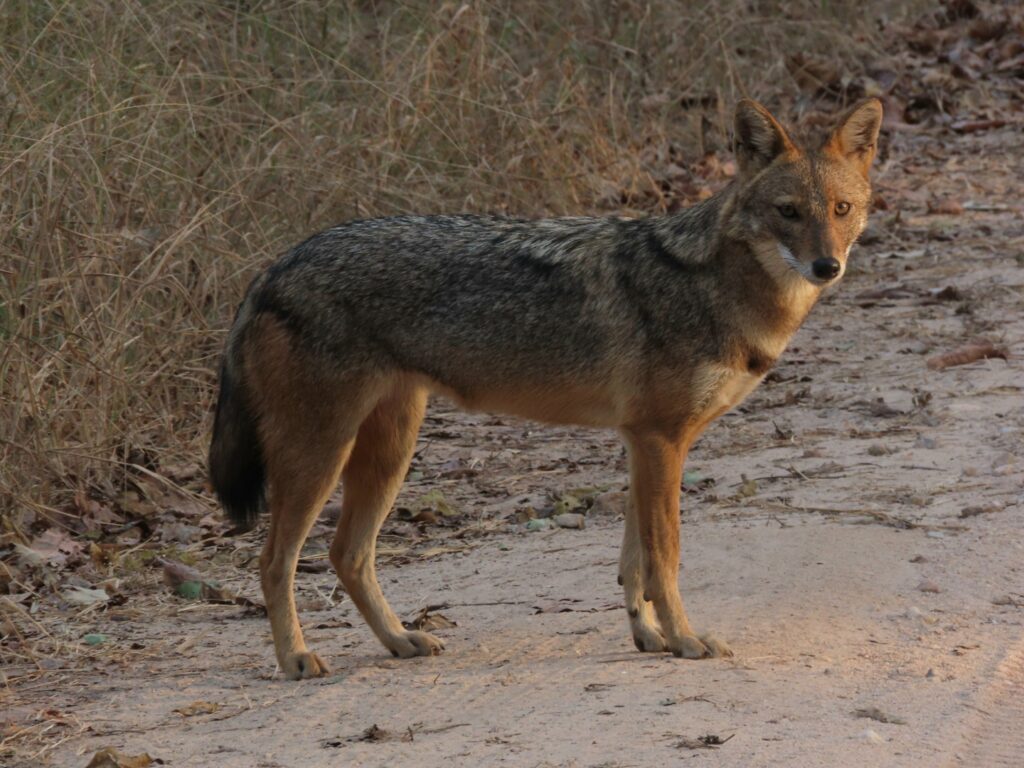
Fact File
Getting There-
Nagpur is the closest airport. (Approx 78kms)
Staying-
We stayed at the Madhya Pradesh Tourism Hotel and Pench Jungle Camp.
Safaris-
1. Can be booked online and at the gate counter, subject to availability.
2. For booking prices check-
https://www.penchnationalparkonline.in/online-pench-safari-booking.html
3.The MPTDC hotel has 9 seats reserved on the Canter. A Canter goes on all the routes.
4.Turia Zone is the most popular.
